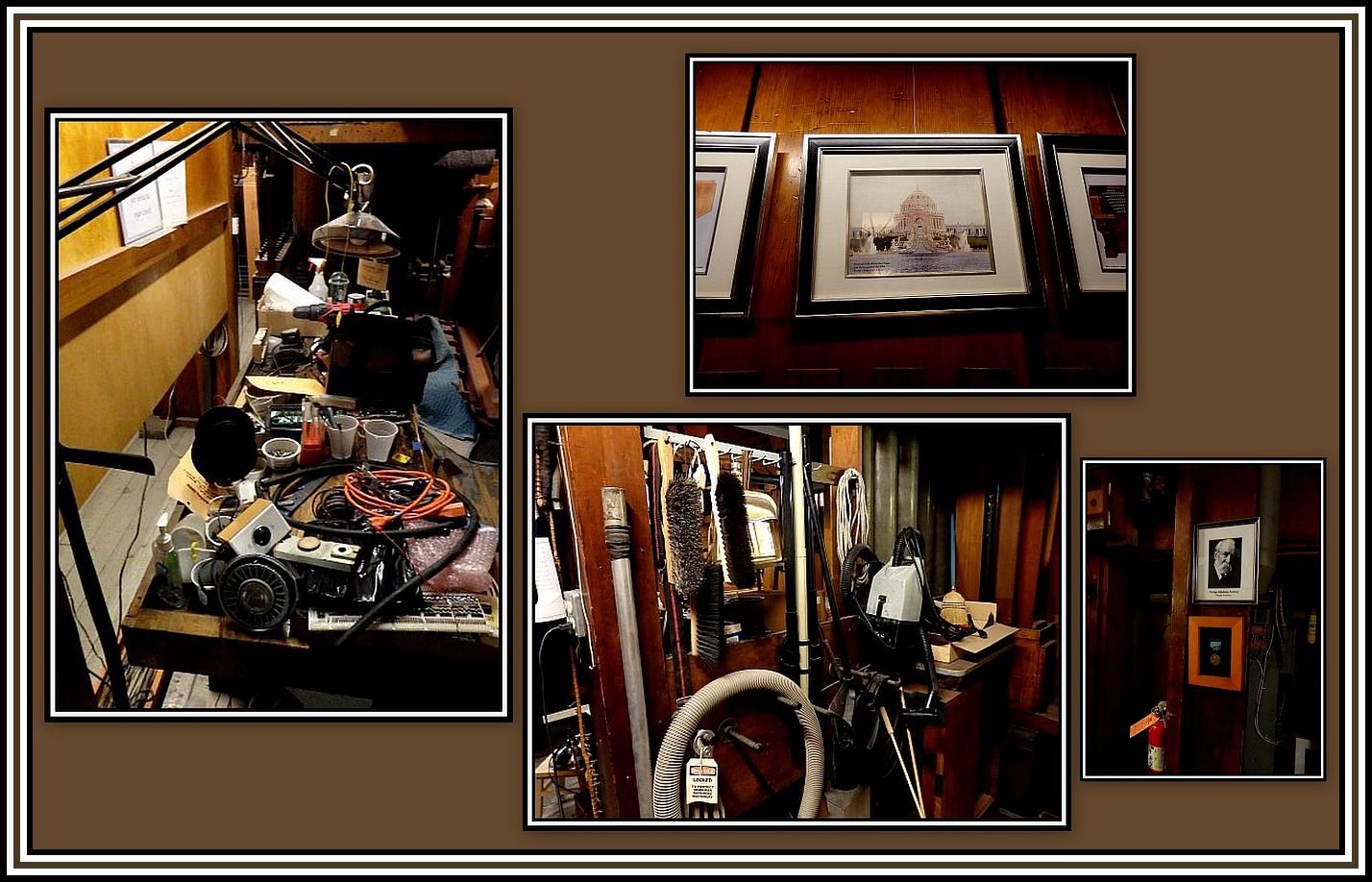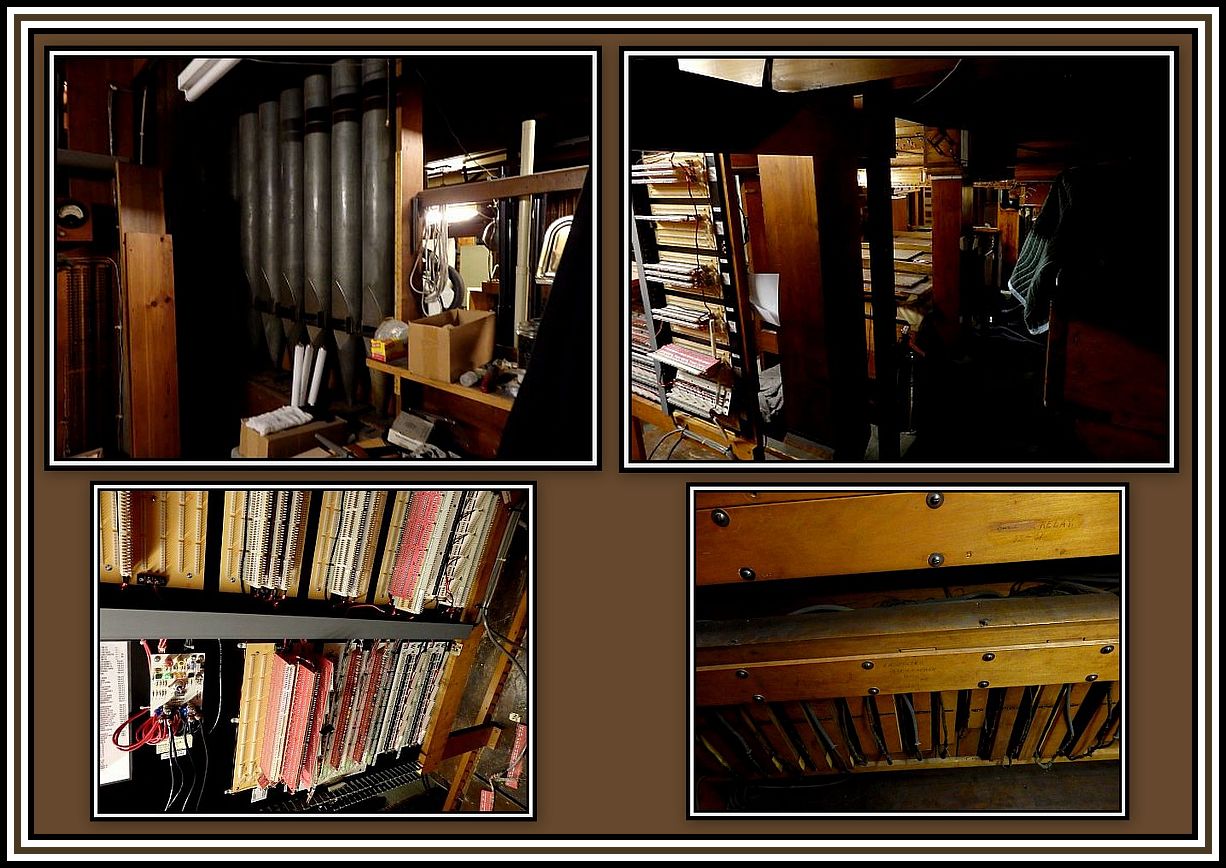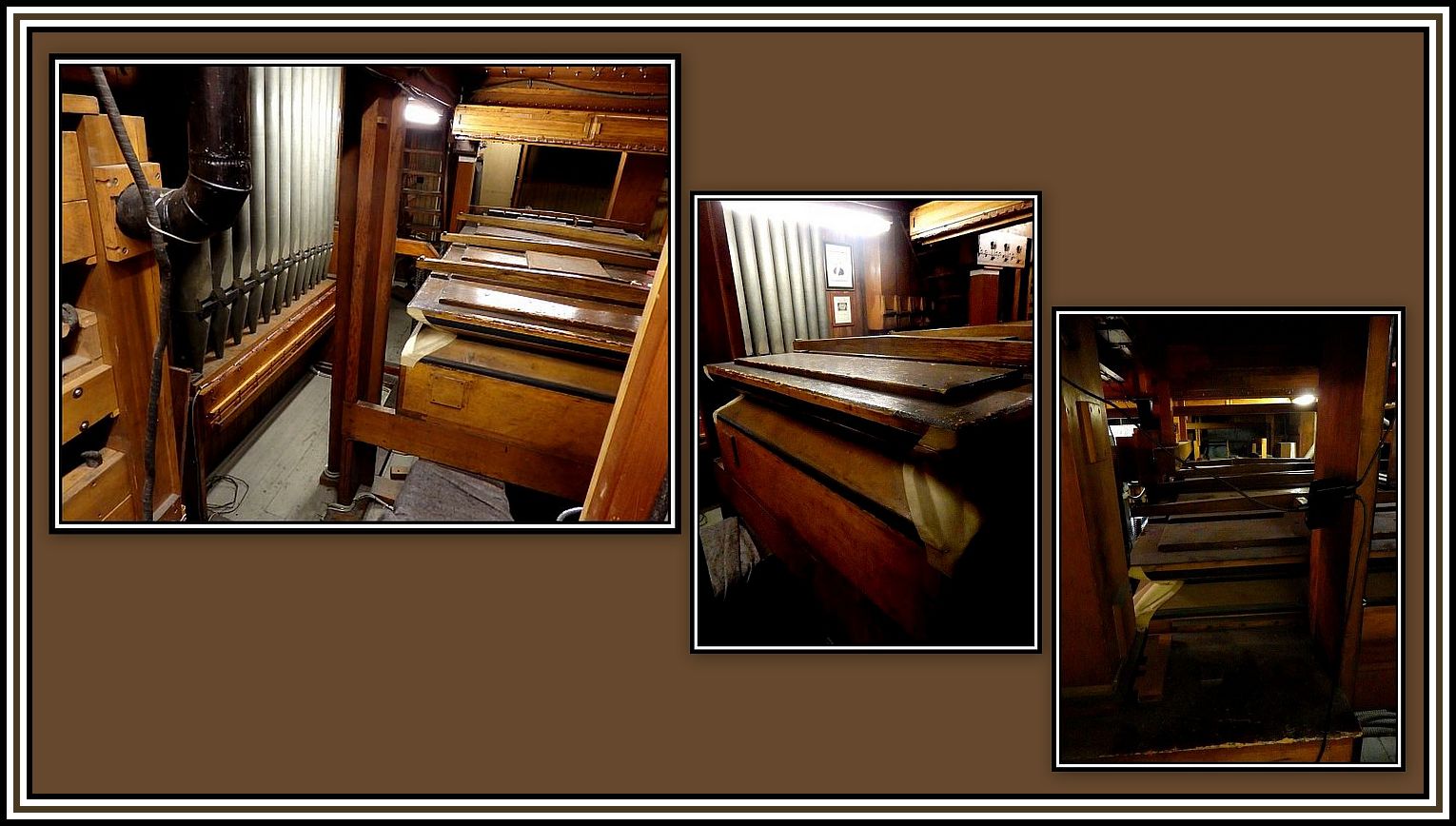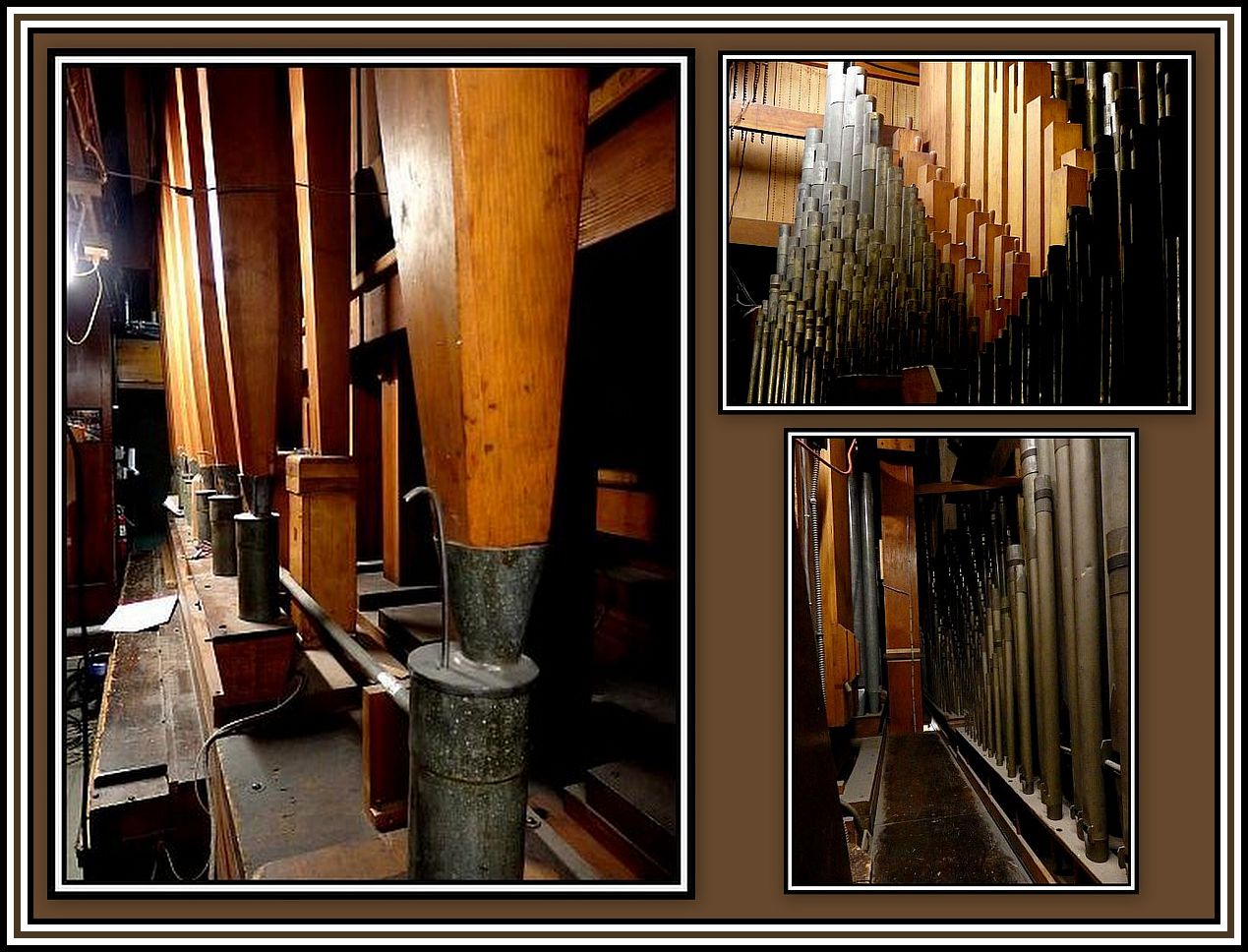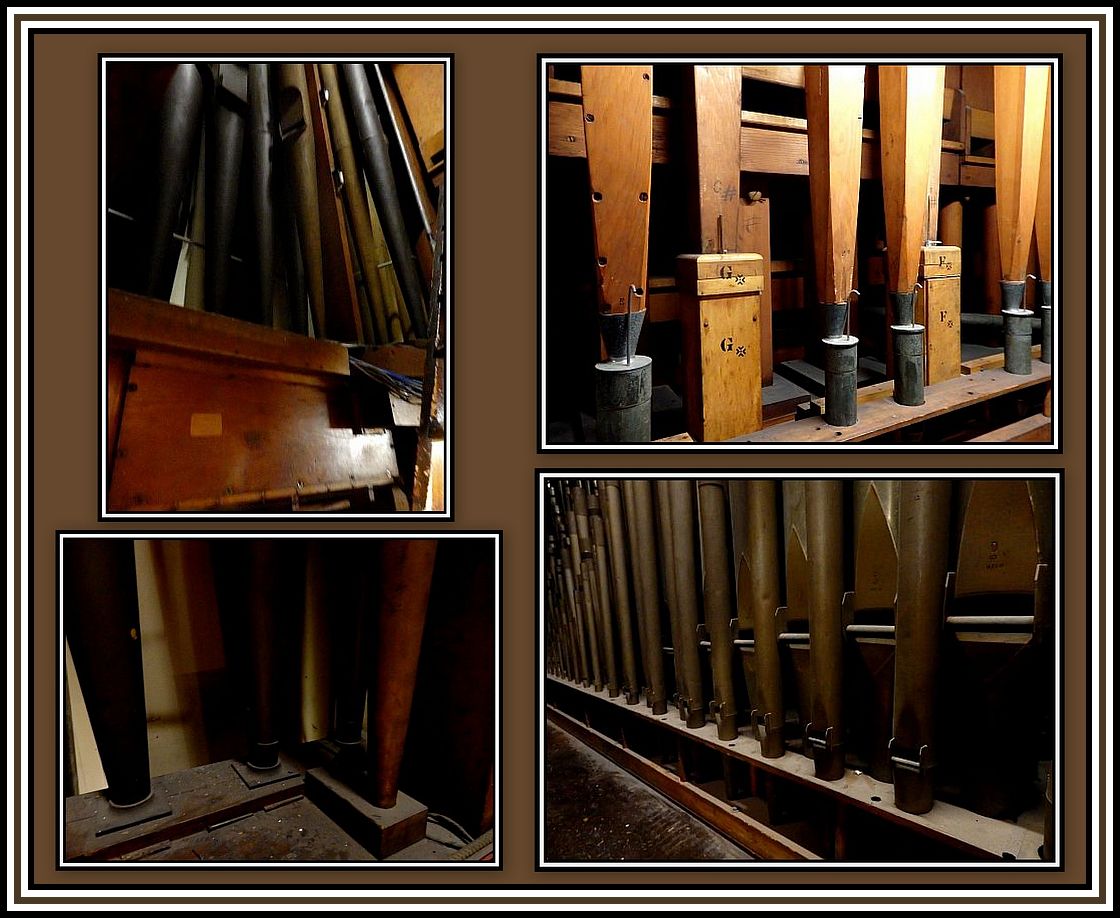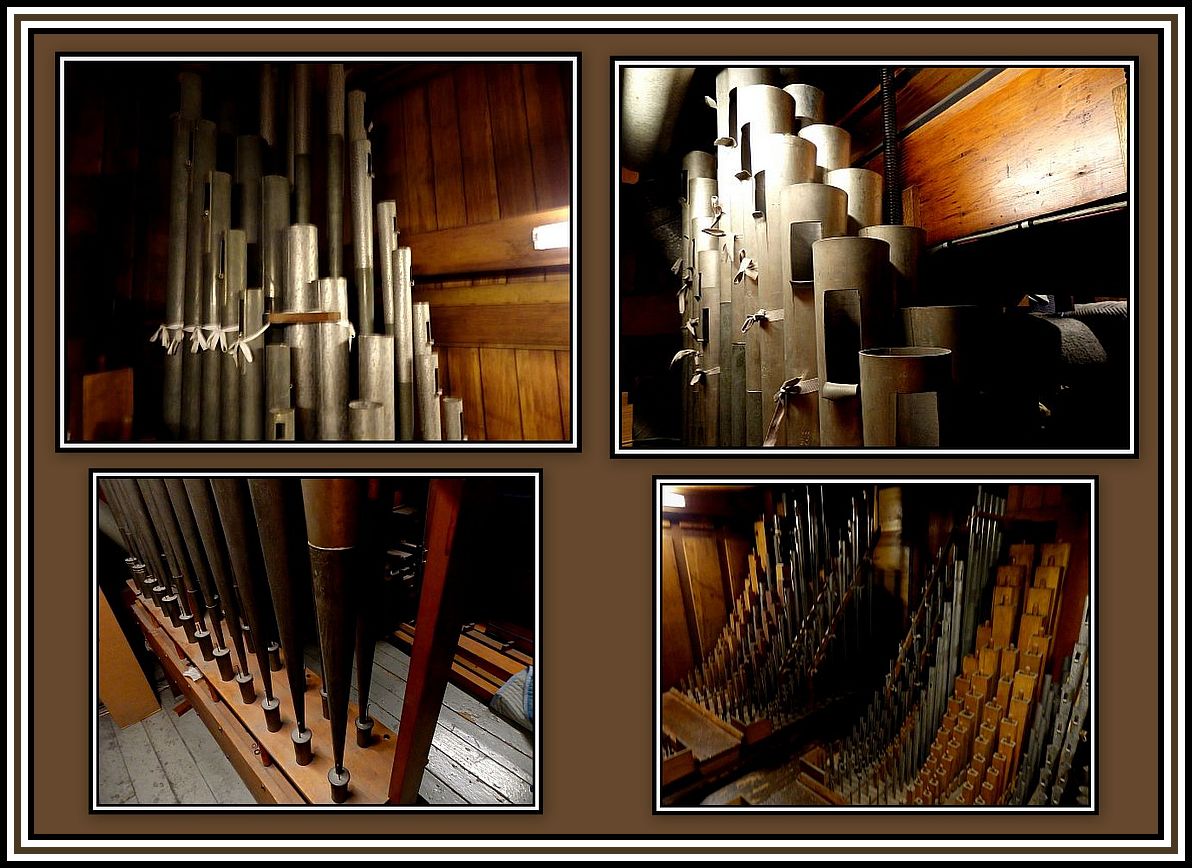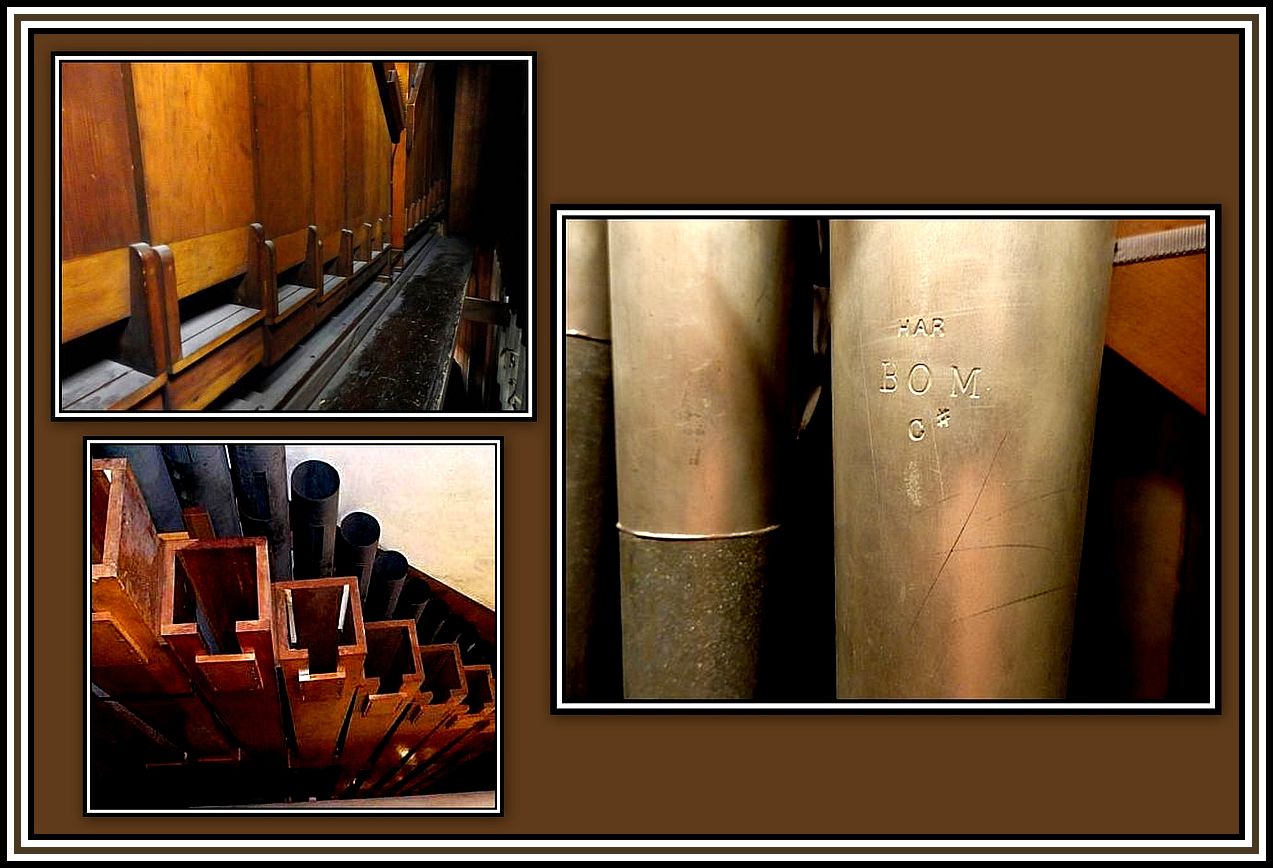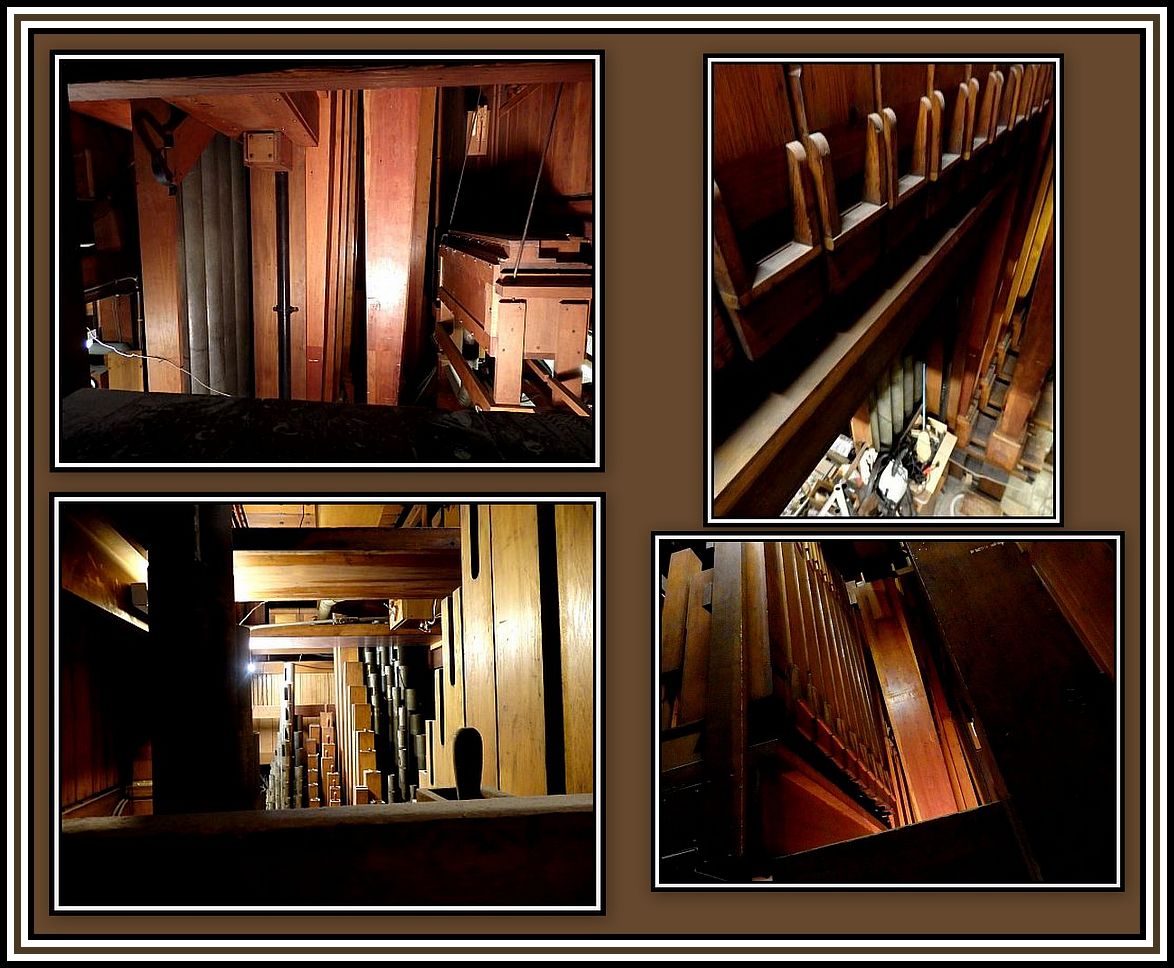THE WANAMAKER ORGAN
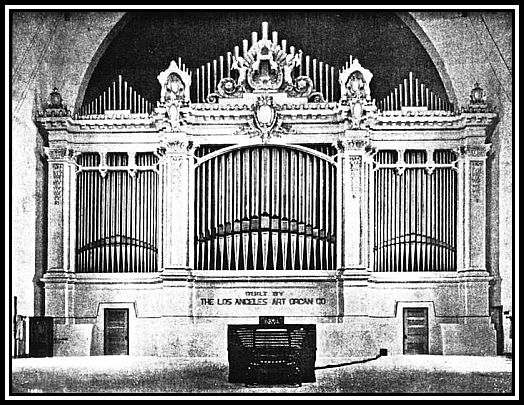 The Grand Concert Organ in Festival Hall of the St. Louis World’s Fair, 1904
The Grand Concert Organ in Festival Hall of the St. Louis World’s Fair, 1904
—ooOoo—
PART FOUR:
A VISIT BEHIND THE SCENES
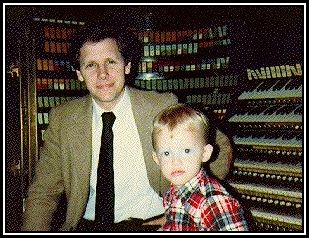 Billy, the young enthusiast, seated at The Console with Keith Chapman (1945-1989) in 1982
Billy, the young enthusiast, seated at The Console with Keith Chapman (1945-1989) in 1982
Photograph taken by Nightscribe
-oOo-
AN INVITATION NOT TO BE REFUSED
And so I followed the gentleman and the others lucky enough to be invited along. We made our way a path that took us between racks of garments for sale on the Second Floor of the Store and passed the entrance to the stage where the Faux Organ Pipes form the backdrop for singers and musicians and stopped at a small door just passed it. Once the gentleman opened the door, we were welcomed to pass through into what I would later call a magical land.
-oOo-
Before beginning this section, I would like to draw the reader’s attention to the fact that the maintenance and restoration of The Wanamaker Organ is the result of the constant work and dedication given by a whole group of people. As a result of the effects of this group of people, the glorious sound of the Wanamaker Organ continues to be heard.
Although it is obvious that the work of each person involved is of importance, I would like to draw the reader’s attention to two gentlemen in particular: Mr. L. Curt Mangel III, the Curator and also Mr. Scott Kipp, the Organ Carpenter & Restorer.
I have it on good authority from The Friends that a major factor in The Organ’s restoration’s progress over the past fifteen years has been the Curator, Mr. L. Curt Mangel III, who is considered to be an expert on pneumatic action and a genius when it comes to electrical things by those who understand more fully than I the workings of The Organ. As a result of his know-how, contacts and fund-raising talents, he is responsible for a number of major improvements to The Organ including:
- A state of the art wood humidifying system to allow The Organ to be used in the driest winter months;
- The relocation of the Orchestral division so it can be clearly heard;
- The doubling-up of the Metal 32 foot Rank so that the Swell Organ can be clearly heard;
- The addition of a MIDI system that makes the old wind relays obsolete and has resulted in a very fast playing action;
- The addition of a state-of-the-art combination action;
- The equipping of a state-of-the-art Restoration Workshop;
- The overseeing of various additions including a giant Gong and a high-pressure unenclosed 8 foot Tuba; and
- The bringing of the entire organ into tight tuning with itself.
I am told that the genius of Mr. Mangel is evident elsewhere, but suffice it to say, his abilities have been a major factor in the revitalization of this instrument.
-oOo-
Although I am but a mere spectator with little knowledge of what is necessary to maintain this wonderful Organ in peak playing condition, I would like thank Mr. Mangel and his team for the work that they have done, are doing and will continue to do.
-oOo-
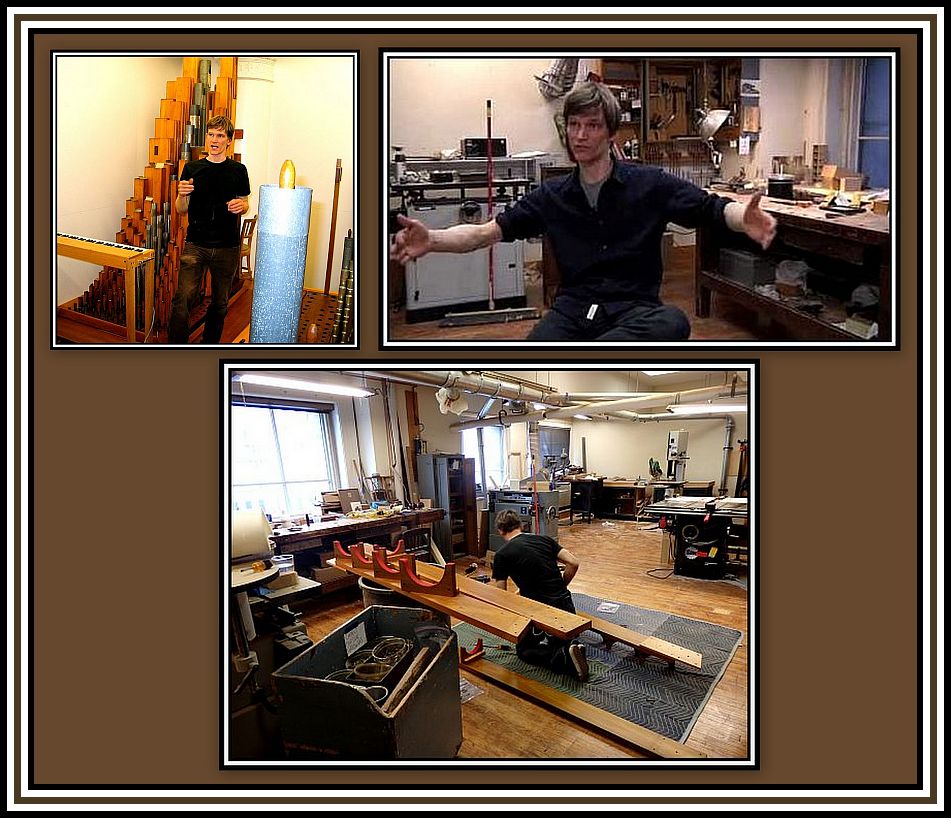 Mr. Scott Kip – Bottom: showing Mr. Kip busy at work in the Organ Workshop
Mr. Scott Kip – Bottom: showing Mr. Kip busy at work in the Organ Workshop
To illustrate Behind the Scenes of the Wanamaker Organ, I suggest that the reader watch the following videos.
I recommend especially the first, since this is one where the Organ Carpenter & Restorer, Mr. Scott Kip, talks about The Organ and his work and takes the viewer on a tour Behind the Scenes:
Click here to watch this video
Secondly, I recommend watching a tour of the Orchestral & String Chambers of The Organ given on 25th June, 2011 as part of The Festival:
Click here to watch this video
-oOo-
After passing through the little door on the Second Floor of the Store, we made our way to a central area, which had the appearance of a working area. The area had a wooden floor and the walls were covered with wooden panels with a few photographs hanging from them. I learned that although some work was often carried out here, this was not the Organ Workshop; we would be going there later.
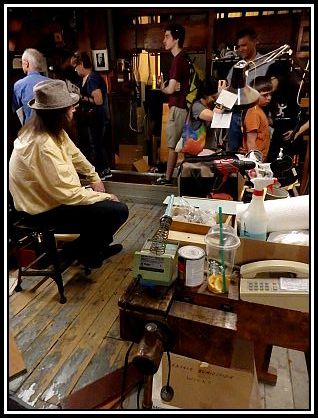 Mr. Bill Bragg (Yesterday USA) in the central area leading a later tour of the area
Mr. Bill Bragg (Yesterday USA) in the central area leading a later tour of the area
Surrounding the central area were a series of little paths that took the visitor past a variety of pipes, bellows and relay systems. I remember being told the names of a number of Ranks of pipes, but unfortunately, I have to confess that I fail to recall what I was told.
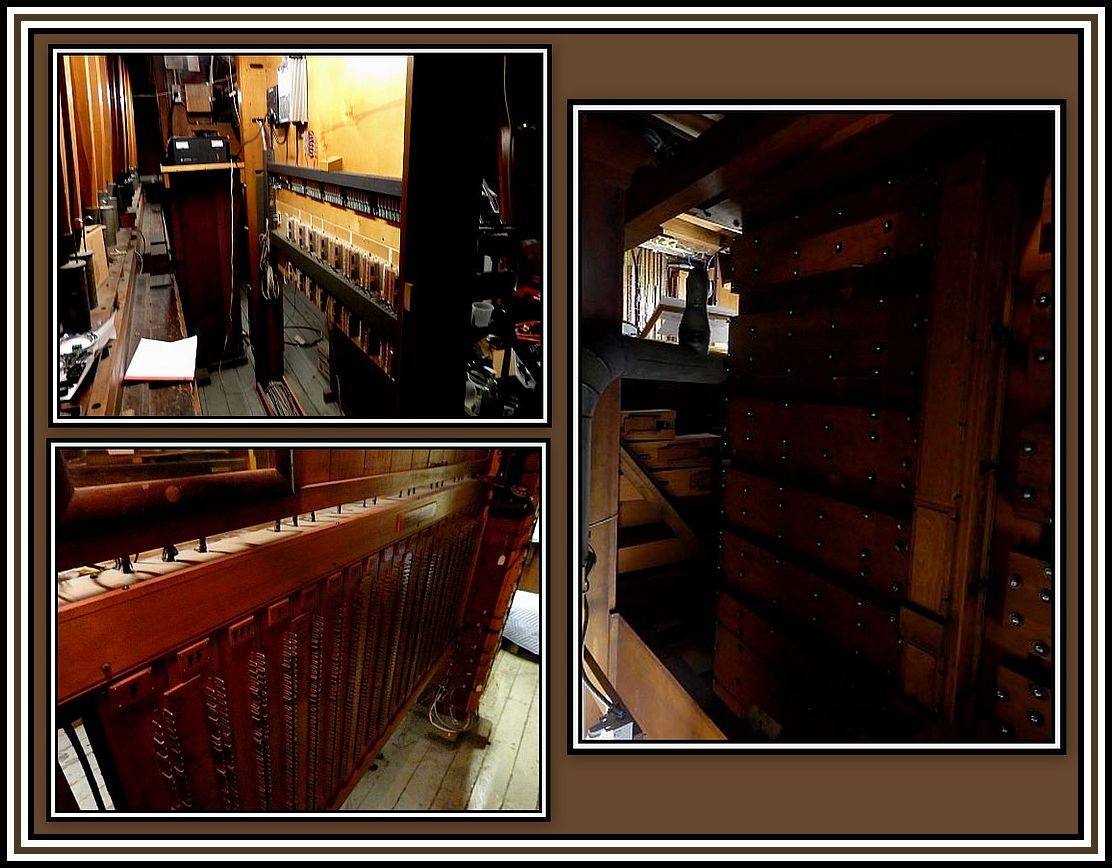 Additional Features of the Central Area
Additional Features of the Central Area
On the periphery of the central area was a huge wooden structure that I learned was the bellows for the Tremolo. The Tremoloimparts on a note a trembling effect, which is brought about by a change in its amplitude. The bellows consisted of a huge leather bag that was held between by two huge wooden plates that were in turn held against the bag by huge metal clamps and wooden crossbars. We were treated to seeing to bag expand when air was pumped into it once the pump was set in motion. We watched the wooden plates rise up until the bag was filled.
Surrounding the central area were a number of pipes in Ranks and arranged in decreasing size. Some of these pipes were large and some very small and their arrangement formed a sweeping curve, which is seen in the photographs that follow.
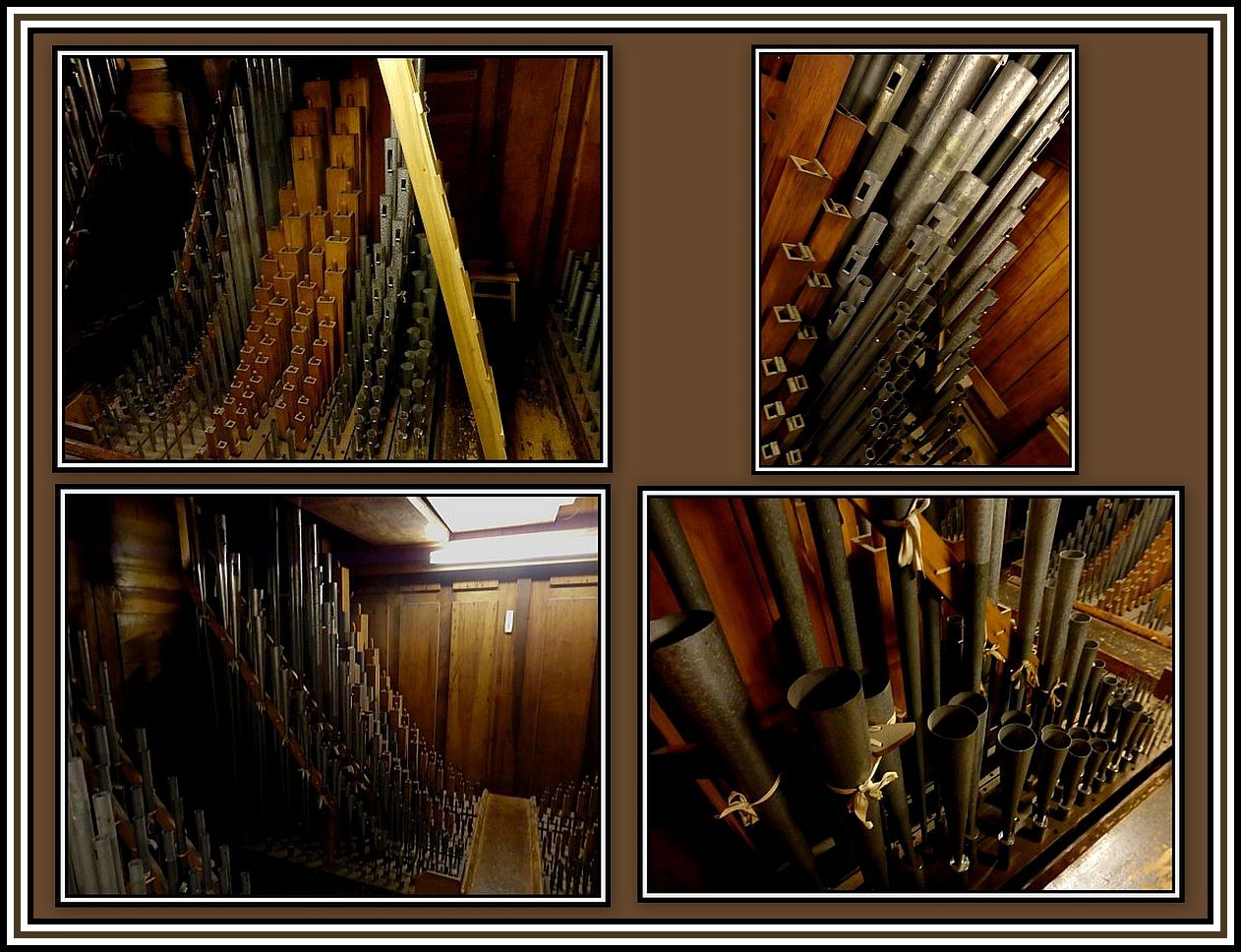 Pipes along the paths leading from the Central Area
Pipes along the paths leading from the Central Area
I noticed that there was a wooden ladder standing on one of the little paths that led away from the central area and that rose up to an opening in the ceiling. I was told that I might climb the ladder and take a look at the loft area where I would see some of the larger pipes reaching up towards the higher stories of the Store.
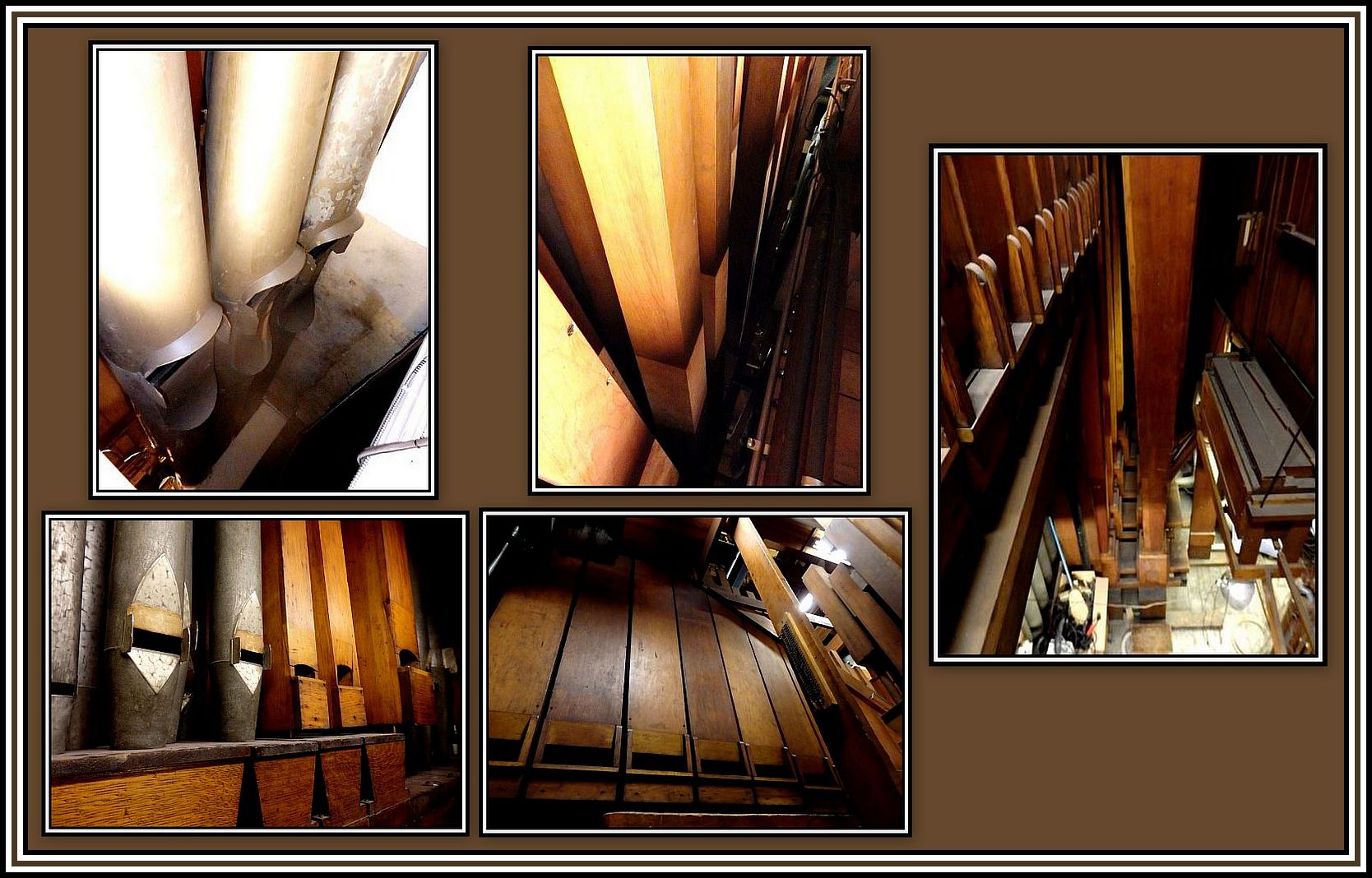 Large Pipes that reach up high
Large Pipes that reach up high
-oOo-
Early on Wanamaker Organ Day, there was to be a tour of the fourth floor Pipe Chambers. This is where the String and Orchesteral Chambers are to be found. Unfortunately I was not able to attend this tour, much to my great regret.
-oOo-
I was contacted recently by a Friend of the Wanamaker Organ, Mr. Evan Jones, with some interesting information regarding additions to the number of Pipes and Stops of the organ after 1930-31 when the organ was considered to have been completed. What follows is his communication:
RANKS & PIPES by EVAN JONES
The first addition occurred in 2008 when the Orchestral division was moved to its new home on the Fourth Floor of the store to the right of the String division.. The curator, Mr. Curt Mangel, decided to keep the Orchestral division Vox Humanas in the original Orchestral chamber and create a new floating division, the Vox Humana Chorus. It was decided to add one additional Vox rank to this new division. This is shown on the Stop Lists as Seventh Vox Humana.
The next addition, the unenclosed Tuba Magna, also known as the Centennial Tuba, took place in 2011 to coincide with the organ’s Centennial. This consists of a powerful Tuba taken from the old organ of Grace Lower Broadway Church in New York. This is shown on the Stop List as Tuba Magna on the Stentor Division and is located in front of the Major Chimes on the Juniper Street-side of the Grand Court.
Between 1950 and 1951, the Orchestral division Post Horn was moved to the Ethereal, thus leaving an unused chest in the Orchestral Division which remains so today. There are plans to add a new rank in the Orchestral division, which could possibly be a powerful but smooth Tuba Sonora or another imitative reed stop. This addition, like all the additions mentioned above, will be pipes that are historically representative of the Wanamaker Organ in voicing, construction and era. When this addition occurs, it will add one rank and seventy-three pipes to the Orchestral Division.
Finally, there is some discussion regarding the addition of a twelve-note extension to the Pedal division sixteen foot Contra Fagotto to form a thirty-two foot Contra Fagotto. Such an addition would give the already-vast Pedal Division a soft thirty-two foot Reed. This would not add an additional rank, but would add twelve pipes to the overall count of pipes.
Once these last two additions are complete, the organ will consist of 465 ranks and 28,762 pipes.
-oOo-
(Click here for the Stop List of The Wanamaker Organ)
-oOo-
In addition, in Greek Hall during the early morning of Wanamaker Organ Day, a presentation was given by Thomas J. Wiekowski entitled, John Wanamaker & The Gilded Age. The presentation focused on the legacy of the Mr. Wanamaker and his family and their contributions to the development of the Philadelphia suburbs.
-oOo-
Following this, the first concert of four was given in the Grand Court. This Grand Opening Concert was simulcast on WRTI-FM on its Crossover programme, which is hosted by Ms Jill Pasternak with Messrs. Peter Richard Conte, Jeremy Filsell, Tedde Gibson and Rudy Lucente as guests.
-oOo-
Please note that I have written to a number of people in the hope of obtaining some photographs of Pipe Chambers in areas that I was unable to view. (Organland: http://organland.free.fr/_wan/en/string.html)
—ooOoo—
ACKNOWLEDGEMENTS
I would like to thank Mr. Jim Stemke for his kindness in allowing me to be present during the recording of the Concert given by The Young Organists, Mr. Bill Bragg for his informative tour of The Organ pipe area, The Enthusiast and the Friends of the Wanamaker Organ for their help in the preparation of this piece.
Finally, I would like to thank Mr. Evan Jones for his clarification regarding the additions made to The Organ after 1930-31 and for allowing his communication to appear here. His addition is much appreciated.
——oooOOOooo——
Click here to go to THE WANAMAKER ORGAN – PART FIVE:
THE GRAND OPENING CONCERT – 2014
——oooOOOooo——
Click here to return to THE WANAMAKER ORGAN – PART THREE:
CONCERT DAYS
——oooOOOooo——
Click here to return to THE WANAMAKER ORGAN – PART TWO:
I’M OFF TO PHILADELPHIA IN THE MORNING
——oooOOOooo——
Click here to return to THE WANAMAKER ORGAN – PART ONE:
HISTORICAL BACKGROUND
——oooOOOooo——
Click here to go to THE WANAMAKER ORGAN – HOME PAGE
——oooOOOooo——
Click here to return to the TABLE OF CONTENTS
——oooOOOooo——

